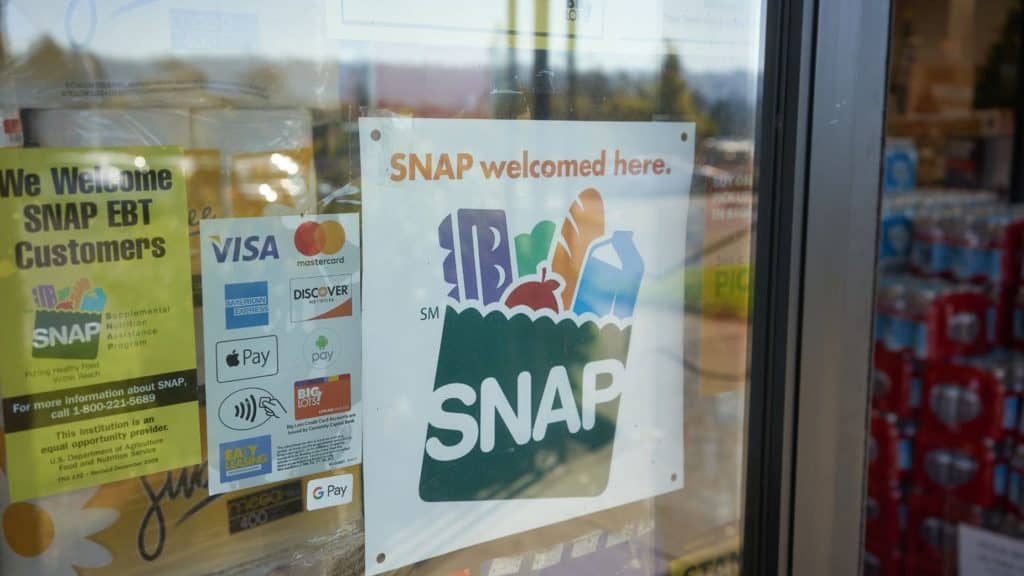In the United States, the SNAP benefits landscape is undergoing significant transformations, with several states contemplating adjustments that would impact the national food assistance program. Essentially, the Supplemental Nutrition Assistance Program (SNAP), formerly known as Food Stamps, constitutes the nation’s most comprehensive effort to combat hunger, supporting 38 million people in 2019.
This program provides monthly payments to low-income or no-income households in the United States and its territories, delivered through Electronic Benefit Transfer (EBT) cards, which can be used to purchase food and beverages at participating businesses. Although SNAP is administered at the state level, allowing each state to define its own eligibility criteria and payment dates, these policies are subject to federal funding.
Proposed Changes in SNAP Benefits
Such state provisions regarding SNAP vary widely, and there are currently several measures under consideration in multiple U.S. states. Although these legislative proposals have not yet become law, they could soon affect SNAP recipients.
In Arizona, House Bill 2502, which would require able-bodied SNAP recipients between the ages of 18 and 60 to participate in work and training programs, as well as House Bill 2503, which would prohibit waivers from the Department of Economic Security, are proposed.
Iowa is working on legislation to limit SNAP purchases to specific foods, excluding candy and non-sugar-free beverages.
Kentucky has passed House Bill 367, instituting a financial asset test and raising income standards for SNAP applications, which includes reintroducing asset ceilings and reducing the upper gross income limit from 200 percent to 130 percent.
Nebraska, with Republican-sponsored LB 1381, would require participation in work and training programs for SNAP recipients, excluding those with three or more convictions for possession or use of controlled substances.
Ohio could see an increase in SNAP benefits for older claimants under House Bill 428, which proposes additional payments for people receiving less than $50 a month in food stamps.
In West Virginia, SNAP recipients could participate in a work and training program similar to those in Arizona, Kentucky and Nebraska, with a possible raising of the age limit to 59 for people able to work without dependents.
These proposals reflect a changing landscape in the U.S. food assistance arena, with potential implications for millions of SNAP recipients across the country.
How much will households in these states receive in SNAP benefits?
The maximum monthly SNAP benefit amount in April 2024 varies based on household size. Here’s a breakdown according to family size:
- A single person: $291
- 2 people: $535
- 3 people: $766
- 4 people: $973
- 5 people: $1,155
- 6 people: $1,386
- 7 people: $1,532
- 8 people: $1,751
SNAP benefits confirmed for April
| State | SNAP benefits |
| Alabama | April 4 to 23 |
| Alaska | April 1 |
| Arizona | April 1 to 13 |
| Arkansas | April 4 to 13 |
| California | April 1 to 10 |
| Colorado | April 1 to 10 |
| Connecticut | April 1 to 3 |
| Delaware | April 2 to 23 |
| District of Columbia | April 1 to 10 |
| Florida | April 1 to 28 |
| Georgia | April 5 to 23 |
| Guam | April 1 to 10 |
| Hawaii | April 3 to 5 |
| Idaho | April 1 to 10 |
| Illinois | April 1 to 10 |
| Indiana | April 5 to 23 |
| Iowa | April 1 to 10 |
| Kansas | April 1 to 10 |
| Kentucky | April 1 to 19 |
| Louisiana | April 1 to 23 |
| Maine | April 10-14 |
| Maryland | April 4 to 23 |
| Massachusetts | April 1 to 14 |
| Michigan | April 3 to 21 |
| Minnesota | April 4 to 13 |
| Mississippi | April 4 to 21 |
| Missouri | April 1 to 22 |
| Montana | April 2 to 6 |
| Nebraska | April 1 to 5 |
| Nevada | April 1 to 10 |
| New Hampshire | April 5 |
| New Jersey | April 1 to 5 |
| New Mexico | April 1 to 20 |
| New York | April 1 to 9 |
| North Carolina | April 3 to 21 |
| North Dakota | April 1 |
| Ohio | April 2 to 20 |
| Oklahoma | April 1 to 10 |
| Oregon | April 1 to 9 |
| Pennsylvania | April 3 to 14 |
| Puerto Rico | April 4 to April 22 |
| Rhode Island | April 1 |
| South Carolina | April 1 to 10 |
| South Dakota | April 10 |
| Tennessee | April 1 to 20 |
| Texas | April 1 to 28 |
| Utah | April 5, 11 and 15 |
| Virgin Islands | April 1 |
| Vermont | April 1 |
| Virginia | April 1 to 7 |
| Washington | April 1 to 20 |
| West Virginia | April 1 to 9 |
| Wisconsin | April 1 to 15 |
| Wyoming | April 1 to 4 |
